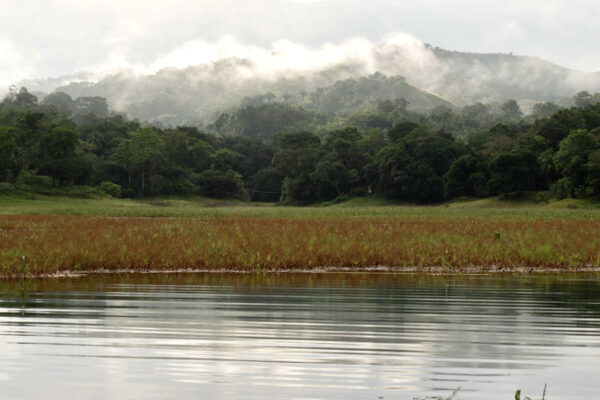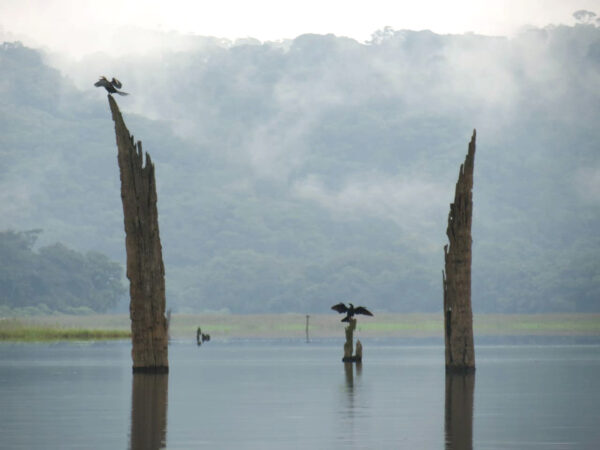Chagres National Park: tomorrow’s water source
Chagres National Park (PNCH) is a protected natural area created in 1984. It is located in the most central and […]
Chagres National Park (PNCH) is a protected natural area created in 1984. It is located in the most central and narrowest part of the isthmus, in the provinces of Panama and Colon. At the time of its creation, indiscriminate logging and uncontrolled deforestation were a matter of concern, in a bleak scenario where the global trend was oriented towards environmental conservation. Consequently, important national parks were created in our country.
The main objectives of the PNCH are: to preserve the valuable forests that conform it, its rich and diverse flora and fauna, and plentiful rivers. From the hydrological point of view, the PNCH is the most transcendental protected area for the future of the country.
It covers 131,260.77 hectares, represents the core of the forest cover of the Panama Canal Watershed and forms a fundamental sector of the Mesoamerican Biological Corridor.
Historic and present-day Chagres
This National Park is home to the country’s most important renewable natural resource and source of fresh water: the Chagres River. From very early on, in the historical records of 1524, during the Spanish colonial period, the great chronicler of the Indies, writer, naturalist and ethnologist, Gonzalo Fernandez de Oviedo, called it the “most valuable river in the world”.
The Chagres and its very important buffer zone, apart from its unquestionable historical role, is a fundamental pillar for the supply of drinking water in the most urbanized and densely populated areas of the country: the provinces of Panama, West Panama, and Colon.

It is here where the use of this water resource is intensified to cover the diverse human needs. The Chagres River plays a fundamental role in the progress, development and continuous expansion of the main urban centers.
Considering also the role it has played for more than a century in international trade, it can be said that it is a strategic hydrological element of world class.
Forests and Biodiversity of Chagres National Park
The varied ecosystems of the PNCH harbor a high biodiversity of flora and fauna in the different life zones that correspond to the types of forests that comprise it. These are:
- The tropical rainforest, located on the periphery of Lake Alhajuela.
- The very humid premontane forest, located northeast of the same lake and towards the Caribbean.
- The very humid tropical forest, to the north and east.
- And finally, the premontane rainforest located at elevations between 600 and 1,000 meters, in the mountain range complexes.
Among the most outstanding fauna species of the PNCH, there is numerous avifauna with majestic birds of prey such as the harpy eagle and the king of the gallinazos. Other very emblematic of tropical forests such as colorful toucans, tanagers, woodpeckers, trogons, hummingbirds, peacock, guan, among others. Among the group of felines, there is a significant presence of predators such as the jaguar, puma, manigordo, jaguarundi and ocelot.
Other mammals include the tapir, deer, monkeys, pintao rabbits, capybaras, peccaries, and an important variety of reptiles, amphibians, and a universe of insects and arachnids.
In the field of botany, the list of vascular plants, including a repertoire of endemic flora species, is endless. From centennial trees in the mature forests that grow in the mountainous region of Alto Chagres with its palms, heliconias, orchids and lianas; to a cloud forest with peat moss on the ground, abundant epiphytes, lichens, liverworts and multicolored bromeliads. Also, tree ferns and a myriad of species of stunted vegetation that moves shivering between the cold gusts of wind, fog and extreme drizzle of Cerro Jefe. This cloud forest has a high endemism and is located 1,007 meters above sea level, on the highest peak of the PNCH and the province of Panama.

Water for tomorrow
The Alhajuela reservoir is located in the PNCH, stores about 800 million cubic meters of water and supplies the Federico Guardia Conte water treatment plant in Chilibre. This plant produces 250 million gallons of potable water daily.
A recent UN study published in Sustainability magazine mentions the application of a model of reservoir water storage loss rates to estimate future losses, calculated worldwide.
The result indicates that Panama is among the five countries that would experience the highest percentage loss of water storage capacity of its reservoirs due to sedimentation by the year 2050 (21 of our reservoirs were included in the study). This forward-looking estimate poses an unprecedented multi-sectoral challenge for water resources management; however, this model may present variations adjusted to changing climatic conditions.
The PNCH is more than a historical site from colonial times, through whose cobblestone roads and rivers precious metals and other riches transited from the Indies to the Spanish crown. It is not only a site of high biodiversity, a refuge for endangered species, endemic species, and a station for migratory birds.
It is more than rainfall, watersheds, lakes, marshes, turbulent rivers, waterfalls, caverns, and amazing scenic beauty: the PNCH is our natural heritage and our most precious source of water for today and tomorrow.
Photos courtesy of Jorge Ismael Muñoz